Do you have a question about the Gree GRS-CQ4.0Pd/NhG3-E and is the answer not in the manual?
General notes and warnings for user safety and product care.
Guidelines for responsible disposal of the product according to EU regulations.
Details on connecting the unit to both a sanitary water tank and an under-floor heating system.
Shows how to connect the unit to a water tank, under-floor coil, and Fan Coil Unit (FCU).
General instructions and codes to follow during the unit's installation process.
Guidelines for selecting the installation location and performing the monobloc unit setup.
Curves showing the relationship between external static pressure and flow rate for different models.
Graph indicating the operational limits for ambient and water temperatures.
Details on water volume requirements and the corresponding expansion vessel pressure.
Formula and method for calculating and adjusting the expansion vessel's charging pressure.
Formula for selecting the correct expansion vessel based on system parameters.
Step-by-step guide for wiring the thermostat to the unit's control system.
Instructions for connecting the 2-way valve, including wiring diagrams and terminal assignments.
Describes the role and specifications of the 3-way valve in the system.
Procedures for installing the optional electric heater and its associated water temperature sensor.
Recommended methods for detecting refrigerant leaks in the system.
Guidelines for the physical placement and mounting of the insulated water tank.
Additional important notes regarding water tank installation clearance and connections.
Technical specifications and dimensions for different models of the water tank.
Detailed instructions for connecting the water pipes for the unit and water tank.
Specifies the acceptable water quality parameters for optimal unit performance.
Instructions and principles for performing electrical wiring for the water tank system.
Identification and function of terminals and connectors on the main control board.
Details on the unit's electrical wiring, including principles and terminal board layouts.
A checklist of essential items to verify before the initial startup and debugging of the unit.
Criteria and process for evaluating the unit's performance after installation and during debugging.
Procedures for performing a test run to ensure the unit operates correctly and to identify issues.
Recommended practices for safely recovering refrigerant from the system during servicing or decommissioning.
Steps and precautions for safely taking the unit out of service and preparing it for disposal or storage.
Checks and preparations needed before operating the unit after a period of inactivity or for seasonal use.
Important safety considerations related to the unit's operation and maintenance.
Procedures for maintaining the insulated water tank, including water handling and cleaning.
Guidance on unit maintenance, including error codes, troubleshooting, and disassembly.
General notes and warnings for user safety and product care.
Guidelines for responsible disposal of the product according to EU regulations.
Details on connecting the unit to both a sanitary water tank and an under-floor heating system.
Shows how to connect the unit to a water tank, under-floor coil, and Fan Coil Unit (FCU).
General instructions and codes to follow during the unit's installation process.
Guidelines for selecting the installation location and performing the monobloc unit setup.
Curves showing the relationship between external static pressure and flow rate for different models.
Graph indicating the operational limits for ambient and water temperatures.
Details on water volume requirements and the corresponding expansion vessel pressure.
Formula and method for calculating and adjusting the expansion vessel's charging pressure.
Formula for selecting the correct expansion vessel based on system parameters.
Step-by-step guide for wiring the thermostat to the unit's control system.
Instructions for connecting the 2-way valve, including wiring diagrams and terminal assignments.
Describes the role and specifications of the 3-way valve in the system.
Procedures for installing the optional electric heater and its associated water temperature sensor.
Recommended methods for detecting refrigerant leaks in the system.
Guidelines for the physical placement and mounting of the insulated water tank.
Additional important notes regarding water tank installation clearance and connections.
Technical specifications and dimensions for different models of the water tank.
Detailed instructions for connecting the water pipes for the unit and water tank.
Specifies the acceptable water quality parameters for optimal unit performance.
Instructions and principles for performing electrical wiring for the water tank system.
Identification and function of terminals and connectors on the main control board.
Details on the unit's electrical wiring, including principles and terminal board layouts.
A checklist of essential items to verify before the initial startup and debugging of the unit.
Criteria and process for evaluating the unit's performance after installation and during debugging.
Procedures for performing a test run to ensure the unit operates correctly and to identify issues.
Recommended practices for safely recovering refrigerant from the system during servicing or decommissioning.
Steps and precautions for safely taking the unit out of service and preparing it for disposal or storage.
Checks and preparations needed before operating the unit after a period of inactivity or for seasonal use.
Important safety considerations related to the unit's operation and maintenance.
Procedures for maintaining the insulated water tank, including water handling and cleaning.
Guidance on unit maintenance, including error codes, troubleshooting, and disassembly.
| Cooling Capacity | 4.0 kW |
|---|---|
| Cooling Capacity (BTU) | 13648 BTU |
| Energy Efficiency Ratio (EER) | 3.21 |
| Energy Efficiency Ratio (Heating) | 3.61 |
| Refrigerant | R32 |
| Power Supply | 220-240V, 50Hz |
| Noise Level (Indoor) | 42 dB(A) |
| Noise Level (Outdoor) | 52 dB(A) |
| Type | Split |
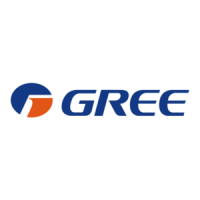
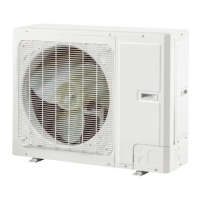

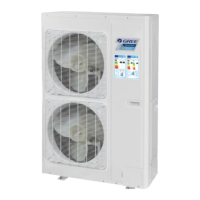






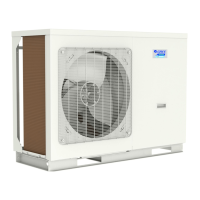
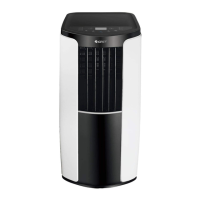
